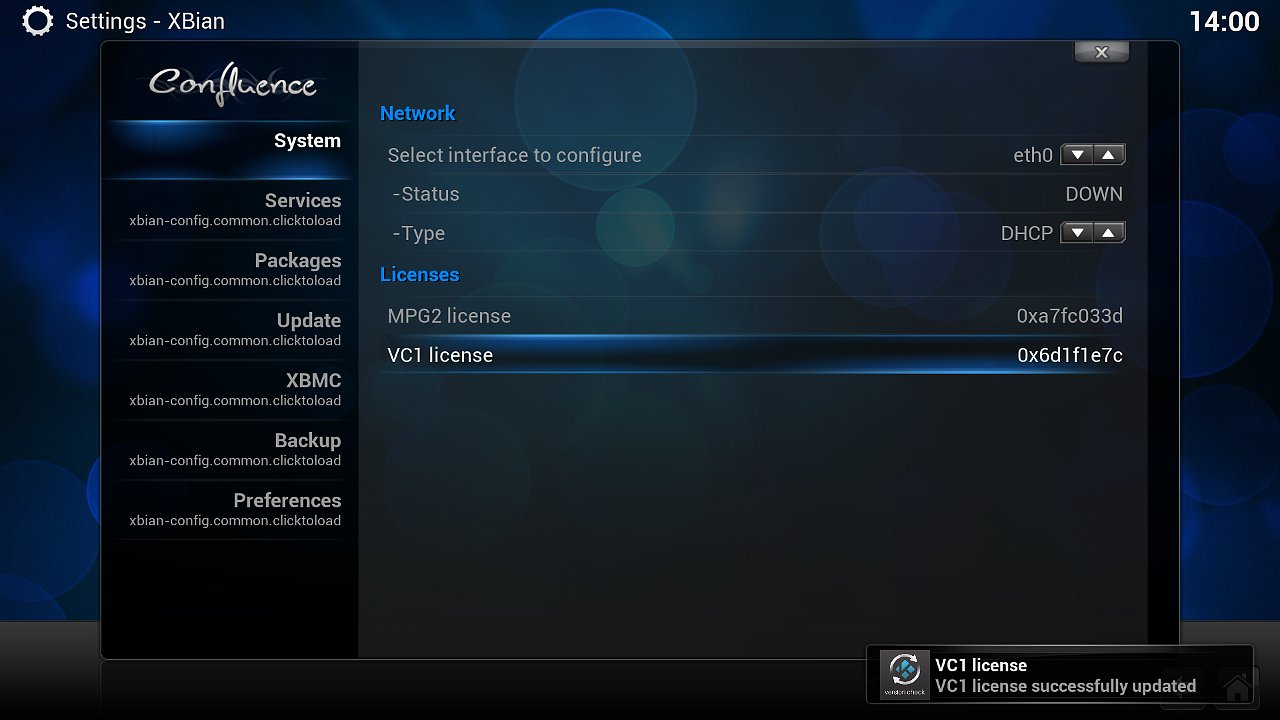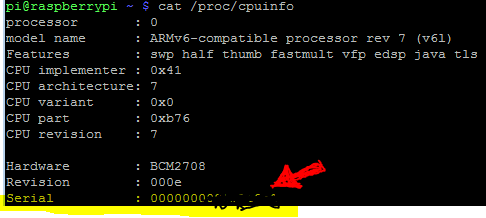

- #Osmc mpeg 2 and vc1 codec license keys install#
- #Osmc mpeg 2 and vc1 codec license keys software#
- #Osmc mpeg 2 and vc1 codec license keys download#
- #Osmc mpeg 2 and vc1 codec license keys free#
It may actually take a larger piece of tape to cover the device properly. Note that I have not tested my Raspberry Pi with this tape as pictured because I do not expect anyone to take photos with traditional cameras while the media center is running. The tape or putty should completely cover both the top and sides of device U16.

The easiest workaround is to cover the affected part, device U16, with opaque tape or glue. This only occurs under particular conditions, so if you do not expect to take flash photos of the board with a traditional xenon flash bulb, you do not have to do anything about the bug. Although this will not damage the Pi, a running system could experience data corruption. The Raspberry Pi 2 has a peculiar bug which causes it to power down when exposed to intense flashes of light of certain wavelengths, such as those of laser pointers and xenon flash bulbs.
#Osmc mpeg 2 and vc1 codec license keys software#
See Step 4 for a list of other current software distributions. In addition to XBian, there are several other operating systems to run Kodi on the Raspberry Pi. The advantage of the Raspberry Pi 2 is that it has a faster processor and more memory, which should make the media center load and respond faster. Prior to this project, I completed a similar one using a Raspberry Pi model B rev. Instead of using the Raspberry Pi 2, you can build a media center using an earlier version of Raspberry Pi. Computer which supports MicroSD cards and has SSH client software (Step 6 only).Vishay Semiconductor TSOP 38238 IR receiver.Three female to female jumper wires, about 20cm long.Television with HDMI input or computer monitor with HDMI input and speakers.AC to microUSB power adapter for the Raspberry Pi 2(output 5 volts, 1 to 2 amps).īefore beginning this project, be sure you have all the parts and tools needed. XBian – A GNU/Linux based operating system for the Raspberry Pi, Raspberry Pi 2, and other small computing devices that runs the Kodi software. A software package that decodes digital infrared signals of most commercial remote controls.
#Osmc mpeg 2 and vc1 codec license keys free#
Kodi – A free and open source media server and entertainment center. Instead, you can control the media center with your television's remote control without any additional configuration required. If you have a television that supports HDMI CEC (Consumer Electronics Control), you do not need to perform Step 6. I bought a remote control at a thrift store.

The instructions in Step 6 enable the media center to accept commands from any remote control you have or purchase.

#Osmc mpeg 2 and vc1 codec license keys install#
Step 6: (Optional) Install and configure infrared remote control capability Step 5: Install XBian on the Raspberry Pi 2
#Osmc mpeg 2 and vc1 codec license keys download#
Step 4: Download XBian onto a MicroSD card Step 2: (Optional) Work around “Xenon death flash” bug Linux command line and configuration files (for Step 6 only).This project requires prior experience with 2 to 3 hours if you do not set up a remote control (Step 6). These steps could have been done while plugged into an HDMI capable television. When I built my media center, I did most of my work with the Raspberry Pi 2 plugged into a desktop computer monitor and set of speakers. Remote control input via IR receiver wired to GPIO.Xbian 1.0 Release Candidate 2 operating system.I chose to use the following components and software. Although the steps in this guide are specific, you should be able to adapt the general method for some of the alternative choices. I included some notes about alternative choices in the steps where alternatives are available. These steps detail the method I used in my build with the hardware and software choices I made, but there are other options that you can choose. After following these steps, you will have a running Kodi media server on a Raspberry Pi 2 in an Altoids tin case, ready for you to attach a thumb drive or hard drive with your media. This guide walks through the construction and configuration of a home media center from parts to running system. Author: Timothy Wood Date: April 2015 Overview


 0 kommentar(er)
0 kommentar(er)
